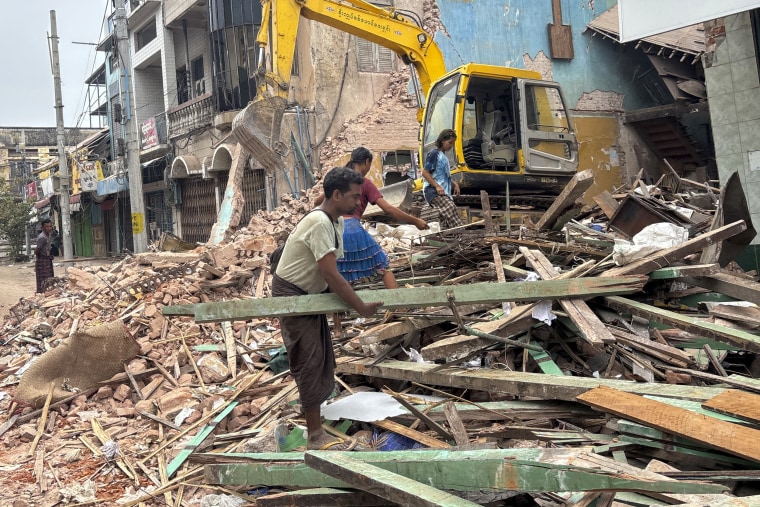Bangkok – Basic services have yet to be restored to these areas of Myanmar due to a huge earthquake three weeks ago, and emergency workers are recovering bodies and regularly facing aftershocks and lack of resources.
Reports of a situation released Friday by the United Nations Office for UN Human Affairs, or OCHA’s Harmony, said that stronger aftershocks shakes central Myanmar daily daily, which increases fear and uncertainty among the affected people, Disrupt the response attempt Increase the pressure on S and already limited resources and services.
“Three weeks after the devastating twin earthquake to Myanmar on March 28, the worst affected communities are still safe, clean water and cleaning, cleaning, stable electricity, health care and necessary services,” the report states that on March 28, the devastating twin earthquakes to Myanmar on March 28 are the devastating twin earthquake.
The second largest city in Myanmar was the center of a 7.7 -mega earthquake near Mandala, but it collided with the country, causing significant damage to six regions and states, including the capital Napita.
It has already spoiled serious Humanity Crisis According to the UN, the country’s civil war was mobilized, which had internalized more than 3 million people internally and displaced more than 20 million people, according to the UN.
A report on Saturday published on Saturday said that the number of earthquake casualties has increased to 3,726, 5,105 people were injured and 129 were missing. It states that 1,975 international aid workers and medical workers from 25 countries have cooperated with local researchers to save 653 people and recover 753 bodies from debris.

Myanma Allen said 65,096 houses and buildings, 2,514 schools, 4,317 Buddhist monastery residential quarters, 6,027 Pagodas and temples, 350 hospitals and clinics, 170 bridges, 586 dams and 203 parts of the country’s main highway have damaged 203 parts of the country’s main highway.
Myanmar Fire Services Department, a government emergency service agency operating in many areas of the country, said in a statement posted on its Facebook page on Friday that rescue workers were cleaning debris, search and debris from large buildings, and their owners were returning debris, cash and cash.
It also states that the researchers recovered two bodies from demolished buildings in Mandala.
An official of the Myanmar Rescue Federation (Mandala), who is working with firefighters, told the Associate Press on Friday that the three -week priority from the earthquake is to clean the bodies and debris under the large buildings, while also providing the earthquake -hitting victims.
The officer, who spoke on the condition of anonymity, because he was feared to be arrested on charges of speaking without permission, said the number of bodies recovered daily had decreased to only one or two.
Another emergency services worker in Mandala, as well as talking on condition of anonymity, said the number of Rescue teams working in Mandala are permanently declining Since most of the international rescue teams returned to their countries when their work was considered to be fully considered to find their work. Local aid workers are primarily contributing to cleaning and providing support, he said.
Earlier this month, the United Nations Development Program estimated that at least 2.5 million tonnes, or about 125,000 truck loads, needed to be removed from the earthquake. It based on the remote sensing analysis of photos obtained by satellite.
The United Nations Humanitarian Agency, a UN Hebbetate, said in a statement on Friday that its staff and Myanmar Engineering Society are cooperating to evaluate the massive damage of the building in the earthquake -hit areas.
A resident said that in Napitao, almost all rescue workers have eliminated their rescue efforts, while the earthquake was damaged. In residential areas, people have completed their own wreckage.
The report on Saturday in Myanma Allen said that the military chief, senior General Man Ang Hilang, told his cabinet members during a meeting on Friday that the citizen setting of Napito would be re -designed.
Napito became the capital of Myanmar in 2006, after almost the scrupts were built on major expenses from the beginning, once a logging center, which was largely settled by farmers. It is noteworthy for its great government buildings and used multi -lane roads.


